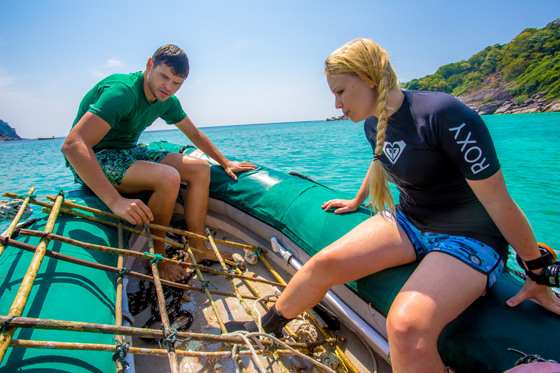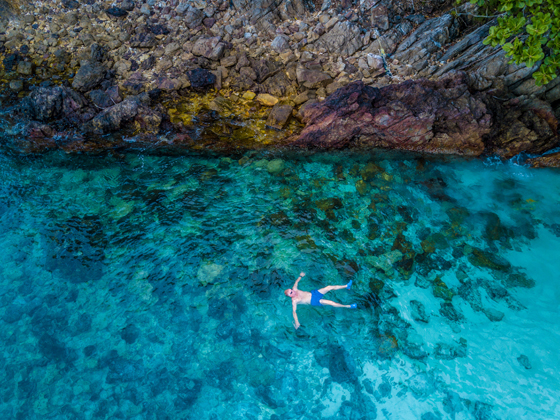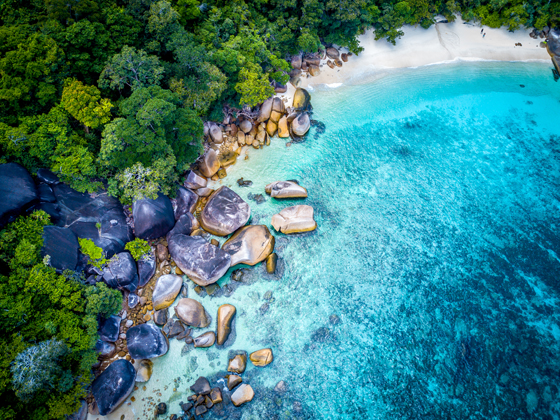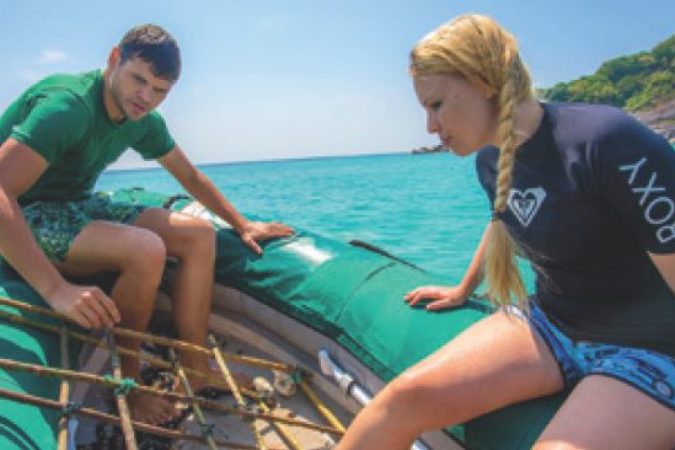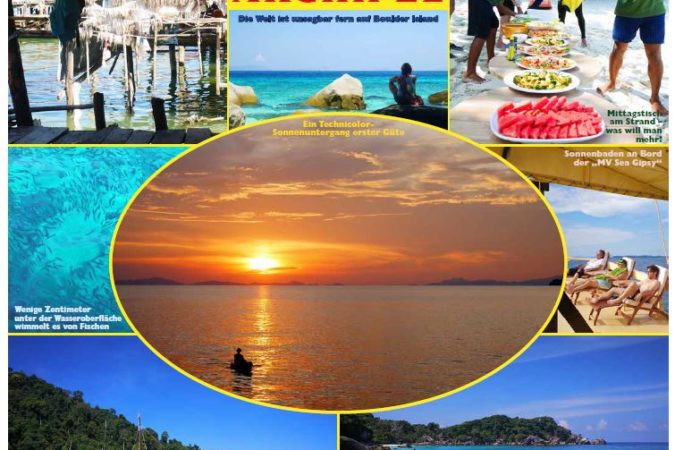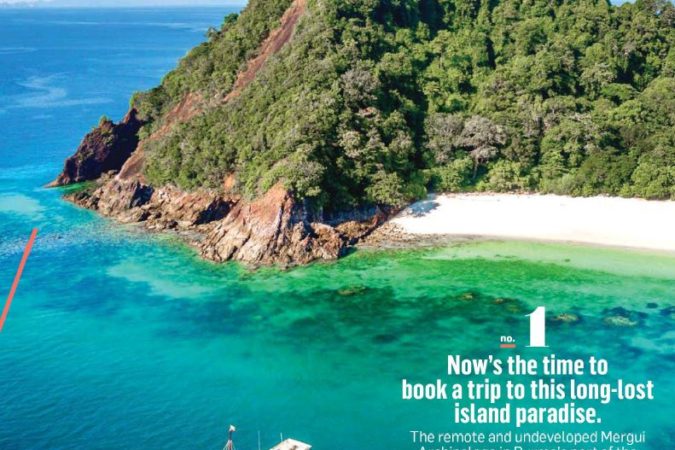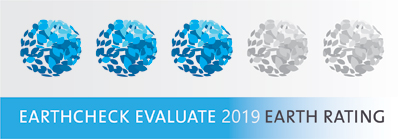December 1, 2017 by Keith Lyons TRWeekly
- Our Onsite Marine Biologists Working
- Our Marine Biologists Working Closely with Students from Myeik University
- Swim in Crystal Blue Waters
MYEIK, Myanmar, 1 December 2017: Regarded as one of the last island paradises left on Earth, Mergui Archipelago is fast becoming one of the most sought-after new destinations in Asia.
Currently lacking any significant tourism infrastructure, the formerly off-limits region in the Andaman Sea only opened to pioneer tourism in 1997 after half a century of isolation, but next year it is poised for a flurry of development.
Scattered off the coast of southern Myanmar, over a larger area than Taiwan, Israel or Belgium, more than 800 islands make up the hidden archipelago stretching some 400km north to south.
“The Mergui Archipelago really is one of the few untouched places left,” says Bjorn Burchard, of Moby Dick Tours (islandsafarimergui.com), who first visited the white-sand beaches and turquoise waters at the turn of the century. “Much of the archipelago is still unexplored. Some of the islands have never been set foot on. Few people know about the place, and because of the challenges of access, even fewer people visit.”
He likens the islands to what Thailand was like three decades ago, and believes there’s potential for sensible, sustainable eco-tourism through boat-based island-hopping safaris and small-scale island-bound tourism. “There is an opportunity here, but also a danger that without proper guidelines and management it quickly becomes spoilt like Phuket.”
Up to recently, venturing into the archipelago was prohibitively expensive. Even now, exclusivity has a price tag. Official visitor fees, starting from US$100,must be paid with crisp, new US dollar bills to the Myanmar government.
The access difficulties, sensitivities policing the Thai-Myanmar border and a clandestine smuggler economy have hindered development of the region, compared to nearby Thailand’s Phuket, Similan islands and Koh Phi Phi. For five decades, not even Burmese could venture into the archipelago. But over the last 20 years, dive boats from Phuket and Ranong have been able to visit the western dive spots, with names like Black Rock and Shark Cave becoming legend among scuba divers.
Chartered boats have taken groups on sport fishing safaris, but in recent years commercial fisheries have overfished much of the Andaman Sea’s warm waters, with trawling, long-line fishing and nightlight fishing using fluorescent lamps depleting many of the fish stocks, including the larger species such as sharks and rays. Most destructive has been dynamite fishing, with telltale rings in the coral reef from blasts reminders of the legacy of unregulated, illegal fishing. Pearl farms now line some bays.
Endeavouring to demonstrate the long-term value of tourism over fishing, and how marine-tourism can benefit not just visitors but also local fish stocks, Boulder Bay Eco-Resort (boulderasia.com) is supporting marine conservation efforts around one of the archipelago’s most diverse islands. As well as striving to have a minimal footprint on land, staff have been combing the island’s four beaches collecting plastics and garbage. But not all is shipped back to Kawthaung for recycling and safe disposal, as some will be used for making eco-building products, and discarded fishing equipment washed up on Boulder Island is being re-purposed as building blocks for an innovative coral reef restoration trial.
Working with Project Manaia (www.projectmanaia.at), the Association for Ocean Conservation, more is being discovered about the island’s reefs to share not just with visitors but to help preserve the unique coral gardens and fish-life. Now in its third year, the initiative has revealed a rich diversity in five bays around the island, and healthy coral and fish populations.
“I’ve worked on similarly sized reefs that only have about third of the coral diversity that we see here on Boulder Island,” says American marine biologist Thor Jensen, who is completing an island reef survey with German Annika Dose.
The pair have been trialling locally-found materials for reef restoration, removing traps from washed-up fish cages and filling them with stones and dead coral to sink to the sea floor where they form new habitat for both coral and fish. Jensen says initial results are promising, with fish quick to check out the new ‘reef’ on previously damaged areas. “So far the method is doing great.”
Boulder Bay Eco-Resort has started a collaboration with the local Myeik University to give field training for marine biology students and teachers on coral identification, surveying and conservation. “We want to empower locals to be involved in the future of this region,” says Burchard. A future Project Manaia programme will study the iconic clownfish (as featured in the movie Finding Nemo), which lives symbiotically among sea anemones.
Another to see the value of collaboration and the preservation of the region is photographic location scout and Expeditions in Photography (www.expeditionsinphotography.com) remote places guide,. David Van Driessche (www.davidvandriessche.com), who has been visiting the archipelago for the last eight years.
The Bangkok-based Belgium says the chance to be alone in such a beautiful place is a rare experience in this modern world. He says contact with the few remaining seafaring inhabitants has left a lasting impact on him. “Visiting some of the settlements of the Moken sea gypsies, there were some children who have never seen a foreigner before. I felt like an anthropologist. This area is so close to Thailand, but no one knew about it.”
He reckons only around 5% of the archipelago has been explored and photographed. Increasingly concerned about the plight of the indigenous Moken, Van Driessche has noted less ‘kabang’ handcrafted wooden boats on the water. He hopes that his documentary photographs of their semi-nomadic lifestyle might help raise awareness about their disappearing culture and help preseve their traditional way of life.
About the Author:
Keith Lyons (keithlyons.net) is an award-winning writer from New Zealand, based in Asia. ‘Opening Up Hidden Myanmar’ (Duwon Books) along with his writing and photographs contributed to ‘The Best of Myanmar: The Golden Land of Hidden Gems’ (KMG) will be published shortly.


